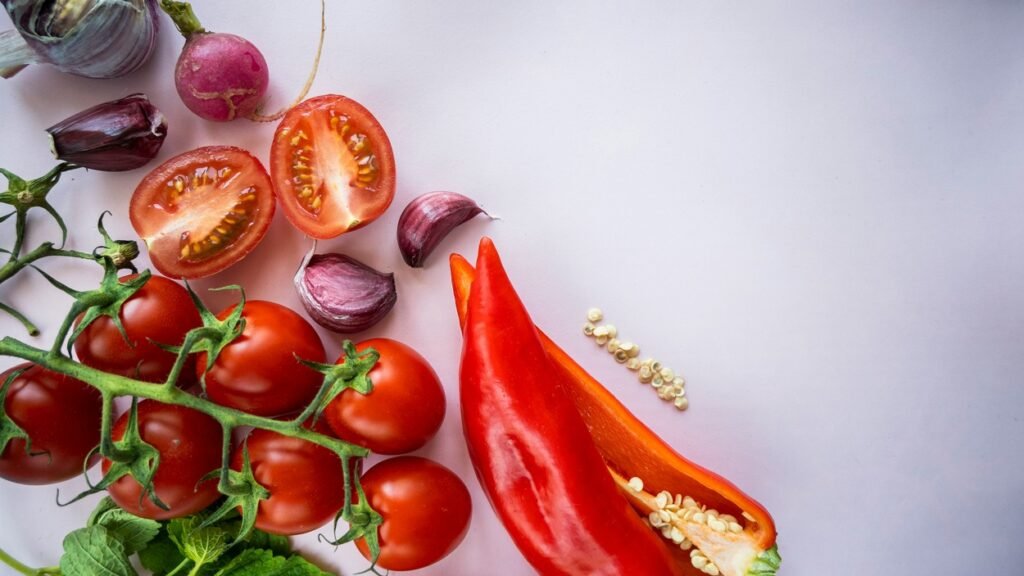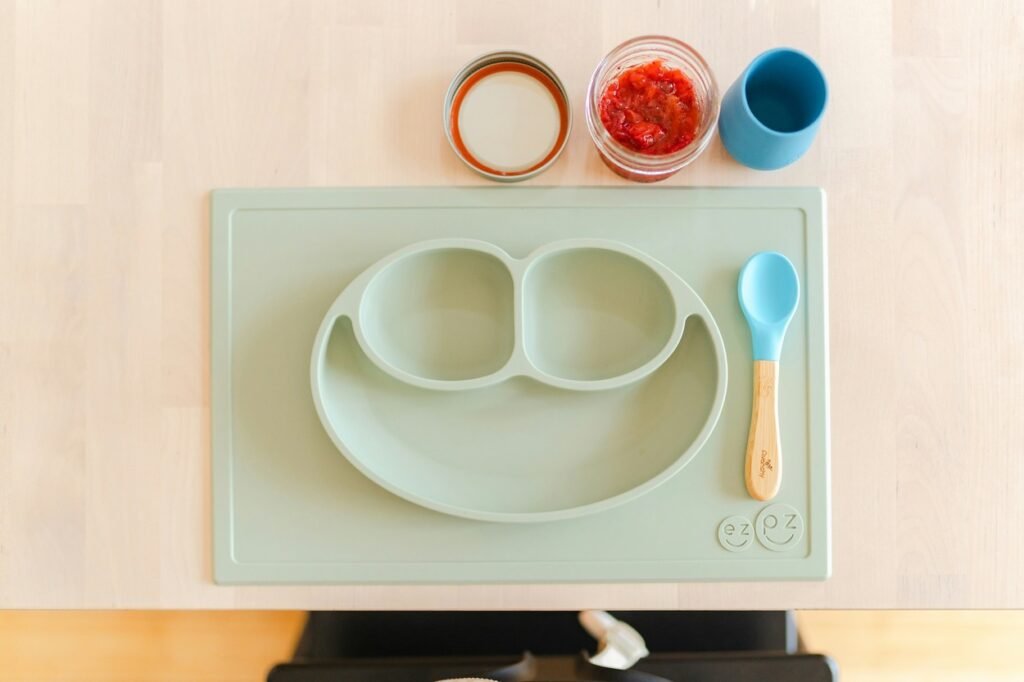Embarking on the journey of introducing your baby to solid foods can feel like planning a major expedition. There’s excitement, a touch of nervousness, and a million questions. As a parent of two delightful kids, aged 4.5 and 5.5 years old, I’ve navigated the choppy waters of baby food introduction twice.
Let’s dive into the delicious, sometimes messy, world of baby food together.
The Perfect Age to Start: Ready, Set, Go!
First things first, when should you start this culinary adventure? Most pediatricians recommend beginning solids around six months. From my own experience, both of my kids showed signs of readiness at slightly different times. My eldest was keen to grab food from my plate at five months, while my younger one took a bit longer to show interest.
Look for signs like your baby being able to sit up with minimal support, showing interest in what you’re eating, and losing the tongue-thrust reflex that pushes food out of their mouth.

First Foods: The Gentle Introduction
The excitement is palpable, but so is the anxiety. What should you start with? Will they like it? Will they spit it out dramatically and leave you questioning your life choices? Don’t worry, I’ve been there twice, and I can assure you, this journey is as delightful as it is unpredictable.
Let’s ease into it with some gentle, beginner-friendly foods that have stood the test of time (and numerous messy bibs).
Single-Grain Cereals
Let’s start with the classics. Single-grain cereals like rice cereal have been a go-to for generations. Mix it with breast milk or formula to a thin consistency, and voilà, you have your baby’s first meal. Rice cereal is gentle on the tummy and fortified with iron, an essential nutrient for your little one.
My kids both took to rice cereal quite well—it was like their morning coffee but way cuter.
Vegetables
Going green is a great idea! Pureed vegetables like sweet potatoes, carrots, and peas are nutrient-packed and mild in flavor. Introduce one veggie at a time, giving it a few days before trying another to monitor for any adverse reactions.
The sweet potato was a huge hit with my kids, though I had to get creative with peas, sneaking them in with other veggies until they got used to the taste.

Fruits
Who doesn’t love a bit of sweetness? Start with pureed fruits like apples, bananas, and pears. They’re easy to digest and offer a natural sweetness that most babies enjoy. Just be prepared for some enthusiastic reactions!
Both of my children adored bananas—easy to mash and sweet enough to make them giggle with each bite.
Homemade vs. Store-Bought: The Great Debate
Choosing between homemade and store-bought baby food is one of the first decisions you’ll face on this feeding journey. Each option comes with its own set of pros and cons, and having tried both, here’s a quick rundown to help you decide what’s best for you and your baby.
Homemade Baby Food–
- Control Over Ingredients: You know exactly what’s going into your baby’s food, ensuring it’s free from additives and preservatives.
- Freshness: Homemade purees are often fresher, and packed with nutrients that might be lost in the processing of store-bought options.
- Cost-Effective: Making your own baby food can be more economical in the long run, especially if you’re using seasonal fruits and vegetables.
- Customization: You can tailor recipes to suit your baby’s tastes and nutritional needs, experimenting with different textures and flavors.
Store-Bought Baby Food–
- Convenience: Perfect for busy parents or those on the go, store-bought options save time and effort in meal prep.
- Consistency: Commercially prepared baby foods have a consistent texture and flavor, which can be comforting for your baby.
- Variety: There’s a wide range of flavors and combinations available, offering your baby diverse taste experiences without extra work for you.
- Safety: Store-bought baby foods are rigorously tested for safety and quality, giving you peace of mind about what you’re feeding your little one.
Ultimately, the choice between homemade and store-bought baby food doesn’t have to be an either/or decision. Many parents, myself included, find a balance that works for their family, using homemade purees when time allows and relying on store-bought options during busier periods.
Allergies: Proceed with Caution
Introducing allergens can be nerve-wracking. Current guidelines suggest introducing common allergens like peanuts, eggs, and fish around six months, but always consult your pediatrician first. Start with tiny amounts and watch for any signs of an allergic reaction, like rashes, swelling, or respiratory issues.
My eldest had a mild reaction to eggs initially, so we paused and reintroduced them slowly later on. Patience and careful monitoring are key.
Texture and Variety: Spice Things Up
Initially, purees should be smooth and thin. Think of it as a baby’s first smoothie—no chunks allowed. Gradually thicken the texture as your baby gets more comfortable with swallowing solids. I remember my kitchen counter being a blend of chaos and creativity, with various purees in different stages of thickness.
Once your baby has mastered single-ingredient purees, it’s time to mix things up. Combine fruits and veggies for new flavors. Sweet potato and apple? A match made in baby food heaven. Peas and pears? Surprisingly delicious. My younger child, always the adventurous eater, loved when I mixed avocado with banana—sounds odd but it was a hit!
Baby-Led Weaning: The Hands-On Approach
If you’re up for a bit of adventure, baby-led weaning (BLW) might be for you. This method skips purees altogether, allowing your baby to feed themselves from the get-go. Offer soft, graspable pieces of food like avocado slices, banana chunks, or steamed carrot sticks. It’s messy, it’s fun, and it encourages your baby to explore different textures and tastes at their own pace.
My second child thrived on this approach, and I quickly learned to embrace the mess as part of the experience.

Keeping It Safe: Hygiene Matters
When preparing and storing baby food, hygiene is paramount. Always wash your hands and utensils thoroughly. If you’re making food in batches, store portions in the fridge for up to 48 hours or freeze them for a longer shelf life. And remember, never refreeze thawed food—it’s a bacteria’s paradise.
I became quite the pro at labeling and organizing my fridge and freezer to avoid any mix-ups.
Patience and Persistence: It’s a Marathon, Not a Sprint
Introducing solids is a process that requires patience. Your baby might love sweet potatoes one day and vehemently reject them the next. It’s all part of the journey. Keep offering a variety of foods, even those that weren’t a hit the first time. Taste preferences can change, and repeated exposure often turns initial skepticism into enthusiastic acceptance.
Both my kids had their picky phases, but persistence paid off, and they now enjoy a wide variety of foods.
Final Thoughts: Enjoy the Ride
As you embark on this messy, joyous journey, remember that there’s no one-size-fits-all approach. Trust your instincts, listen to your baby’s cues, and don’t stress too much about the occasional food fight. Every spoonful is a step towards helping your little one develop a healthy, adventurous palate.
So, grab those spoons, don your aprons, and get ready for some baby food fun. Whether you’re whipping up gourmet purees or enjoying the convenience of store-bought options, the most important ingredient is love (and maybe a little bit of patience).
Happy feeding!
